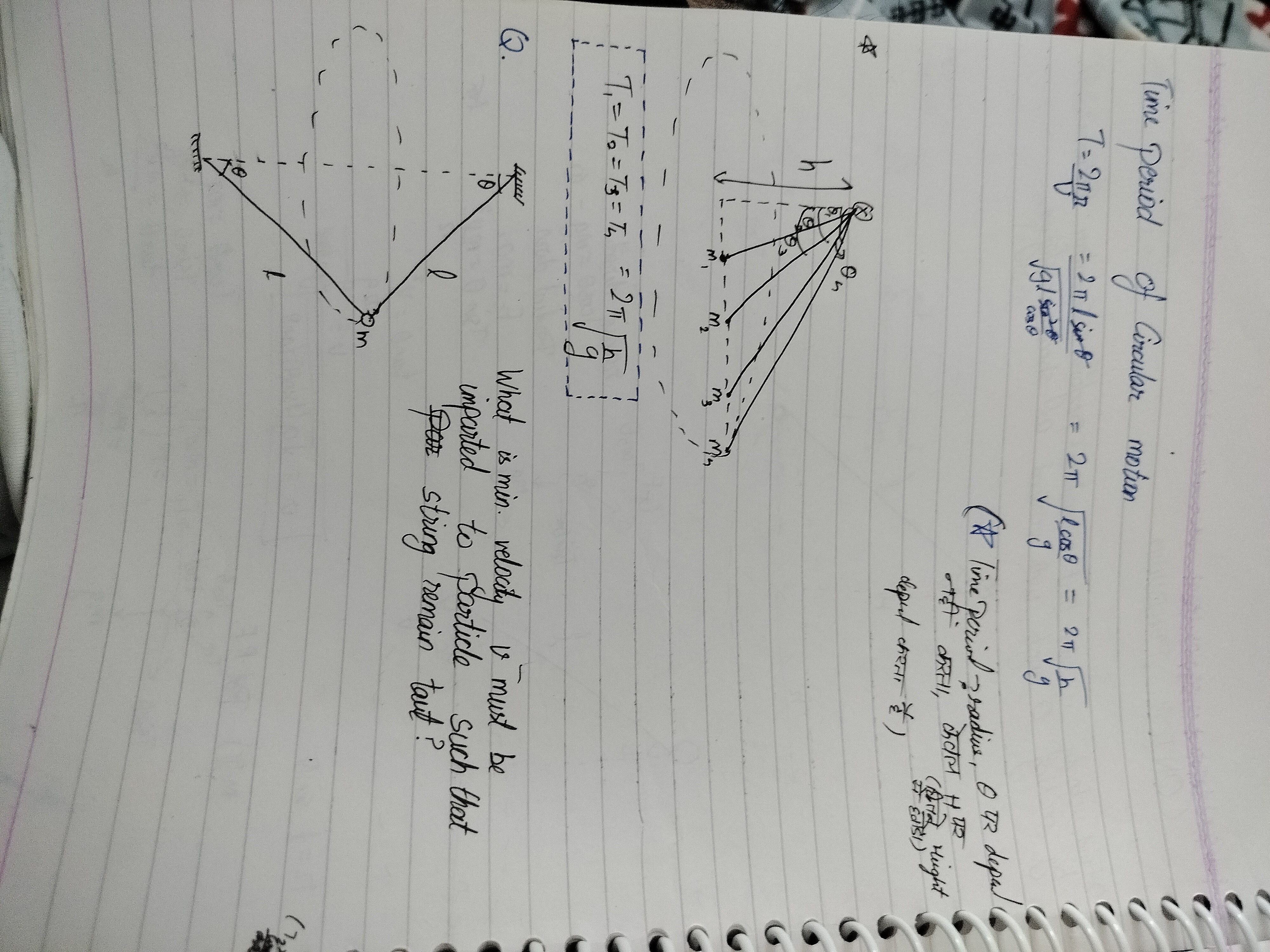Question
Question: What is min. velocity $v$ must be imparted to particle such that par string remain taut?...
What is min. velocity v must be imparted to particle such that par string remain taut?

gl
2gl
3gl
5gl
2gl
Solution
For the string to remain taut, the tension (T) in the string must always be greater than or equal to zero. Let v′ be the speed of the particle at an angle θ with the vertical. The forces acting on the particle are the tension T along the string (towards the pivot) and gravity mg downwards.
Applying Newton's second law along the radial direction: T−mgcosθ=mlv′2 T=mgcosθ+mlv′2
For the string to remain taut, T≥0.
If the particle is imparted an initial velocity v at the lowest point (θ=0), its speed v′ at an angle θ can be found using conservation of energy: 21mv2=21mv′2+mgl(1−cosθ) v′2=v2−2gl(1−cosθ)
Slackening occurs if T≤0. This condition is most critical when the pendulum swings beyond the horizontal level (θ>90∘), where cosθ<0.
The minimum velocity required at the lowest point to prevent the string from going slack is the velocity that allows the pendulum to reach at least the horizontal level (θ=90∘) without the tension becoming zero.
At θ=90∘, the tension equation becomes: T=mgcos(90∘)+mlv′2=mlv′2 For the string to be taut, T≥0, which means v′≥0.
The minimum velocity v at the bottom such that the string just remains taut corresponds to the case where the pendulum reaches the horizontal level (θ=90∘) with zero velocity (v′=0). Using conservation of energy: 21mv2=21m(0)2+mgl(1−cos90∘) 21mv2=0+mgl(1−0) 21mv2=mgl v2=2gl v=2gl
If the initial velocity v at the bottom is less than 2gl, the pendulum will not reach the horizontal level (θ=90∘). At its highest point, θmax<90∘, and v′=0. The tension at this point will be T=mgcosθmax>0, so the string remains taut.
Therefore, the minimum velocity that must be imparted at the lowest point such that the string can remain taut (i.e., to reach at least the horizontal level without slackening) is 2gl.
